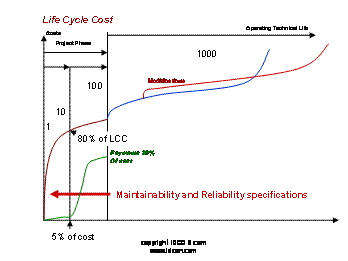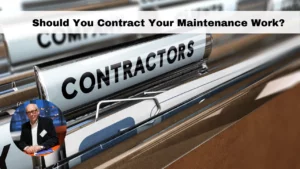Life Cycle Cost is important, but we must understand before we can evaluate. Many reliability and maintenance improvement initiatives are successful, but most do not deliver the results that are possible to reach.
I have observed that the rate of success is higher in many other countries than USA.
Some common denominators I have observed in very successful organizations include;
- They are long term focused.
- They have stuck to the concepts they believe in for a long period of time.
- They have a constancy of leadership.
- Their beliefs and missions are well documented and communicated.
- People changes in plant leadership do not change their beliefs.
- They execute what they believe in.
In a discussion many years ago with the president of a European manufacturer of stainless steel, he told me that Scandinavian pulp mills use five times more stainless steel in their designs then we do in USA.
To me it explains the difference in mindset, we are short term focused in USA, and many other countries are more long term focused. This can be driven by taxation rules, climate and other factors.
The Concept of Life Cycle Cost
The concept of Life Cycle Cost (LCC) is not well practiced in many organizations because we are driven by shortsightedness and a focus on short term cost reductions instead of a focus on what drives cost.
For example a good preventive maintenance program drives down cost, but it costs money to implement and run.
Good returns are produced within a year, but break-through results are seen after three to five years.
At that time the same management team that took the cost to implement has moved and can not claim the results.
Selection of equipment based on Life Cycle Cost is another example. The right equipment might cost more, but cost of ownership is lower.
The graph below illustrates this.
The green line illustrates that at the point when 50% of the project phase is used, 5% of cost has been used and decisions that impact 80% of future cost of ownership has been taken.
At that point in time equipment and system design is specified and procurement starts with requests for proposals. Much of this has to do with equipment, material, process design etc.
Here I like to take an example on technical documentation, which is very important for cost of ownership.
If a specification is developed to include all original parts, material, corrective and preventive maintenance descriptions (with pictures), trouble shooting and root cause diagram etc is documented and part of requests for proposals we can assume the cost of developing this document is 1 if done early in project.
If done later the cost is 10. If done when contract is signed as an add on to specifications, the cost escalates to 100 and if it is not done at all the cost to do it five years later will be 1000.
If you find that equipment is not performing as expected, modifications can be done to extend technical life and this is also very expensive compared to doing it in the specification phase.
To include maintainability and reliability designs early in the project can be a very good investment.
Why is this not done in majority of organizations?
The project manager is driven by budget and time. Someone else will take future costs of ownership.
This can be changed, but then we must think long term and reward long term actions.





